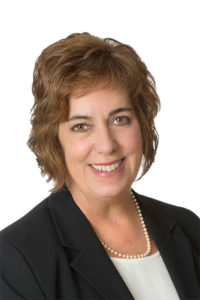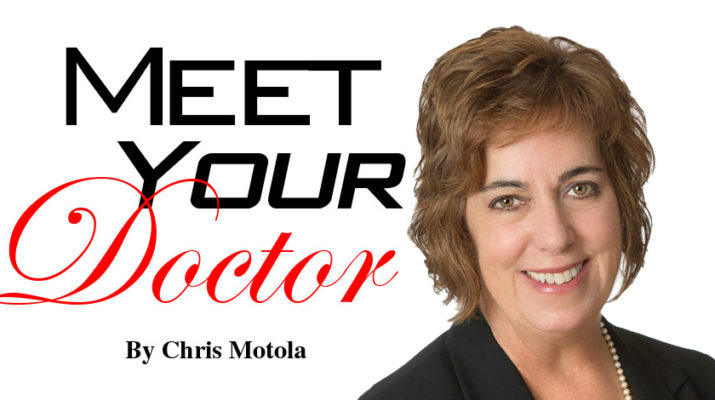President of Medical Health Associates of Western New York discusses why four pediatrics groups in the Buffalo area decided to join forces to form a ‘super group’
By Chris Motola

Q: How big is the group that you oversee, Medical Health Associates of Western New York?
A: It’s four pediatric offices that came together in what’s called a super-group — or doctors-without-walls. So, it’s Western New York Pediatrics, Suburban Pediatrics, Integrity Health Group and Williamsville Pediatrics Center. Each group continues to practice independently from a day-to-day standpoint. We don’t, as Medical Health Associates, offer any clinical services, we all still maintain our own office culture and still practice independently. The business arm of it is where the four groups coming together has value. We have leadership through a CEO, accounting services and HR. Those are the services MHA offers to each of its groups.
Q: Can you describe your role as president?
A: When we came together we formed a board of managers. I’m the president of the current board for Medical Health Associates.
Q: Are you still practicing?
A: Yes. I’m a full-time pediatrician.
Q: What are the advantages to structuring practices this way?
A: Centralizing the business aspects of small companies like pediatric practices and hiring the talent to run the business, it takes that responsibility off the physicians. The theory is to let the doctors go back to being doctors and not worry so much about the business level. That all gets sent to the central office. Same with accounting and HR, too. As you know, there are a lot of changes mandated by the state, and you have to be very careful with your HR procedures. Having someone who can concentrate on that is very helpful.
Q: Does pediatrics in particular benefit from this structure?
A: On the patient level, they probably don’t notice. More globally, it’s that practices in the super group have leadership that’s looking at best practices and outcomes. It just moves the bar up and ensures that you’re getting a high level of care from any physician within the group.
Q: Did you come up through one of the subgroups?
A: I came up through one of the groups, Western New York Pediatrics.
Q: How did you become more involved in the administration?
A: This took years to form. As time went on, I’ve actually become a little less involved than I was. MHA has been around for about two years, but the groups were meeting for about three years prior to that to lay the groundwork. So, we’ve been at this for a while. Once we formed, I became the president, but my role has more or less stayed the same. I go to some business meetings and work closely with the CEO. We have board meetings every month.
Q: What are some of the challenges coordinating four different practices with their own cultures?
A: The biggest challenge in trying to find common ground. It does help if there’s some commonality in how we use our EMR [electronic medical records] so we can look at quality metrics. So, trying to find common ground that all the docs can agree on has been the biggest challenge. Everyone was doing things a little bit differently. Sometimes that’s OK, but you also need to have a common platform to track your metrics. They’re clinical metrics. It’s really about discovering what everyone’s doing now, and then looking at benchmarks and standards of care, then just rolling it out at the committee level. We use the American Academy of Pediatrics guidelines called Bright Futures as a starting point. Really just making sure everyone’s adhering to what’s recommended and making sure everyone’s using the same diagnostic codes. We’re still learning from each other, but I think that’s been biggest challenge.
Q: In your own pediatric practice, what kinds of changes have you experienced?
A: I felt like we were already pretty high-quality care, but we have learned different ways to do things from the other groups. One thing has been we’ve kind of combined knowledge about mental health, so that’s been an advantage. At the business level, everything’s been a lot more streamlined.
Q: What kinds of initiatives are the groups working on collectively?
A: We had an initiative to, for instance, use the same vision screener for kids from 12 months on up. We met with the pediatric ophthalmologist and discussed in all four practices the best practices recommended in Bright Futures, so we’re all doing the same thing. We are working on clinical pathways for standards of care for asthma, for example. We’re started to track HPV vaccination rates and trying to put methods in place to increase our vaccination rates.
Q: Do your patients migrate between the practices?
A: At the moment, no, but it’s been talked about.
Lifelines
Name: Colleen Mattimore, M.D.
Position: President of Medical Health Associates of Western New York
Hometown: Buffalo
Education: University at Buffalo School of Medicine (medical degree), cum laude; Harvard University, post baccalaureate extension program, pre-med; University at Buffalo, bachelor’s degree in nursing, cum laude
Affiliations: Oishei Children’s Hospital
Organizations: American Academy of Pediatrics; Buffalo Pediatric Society; Medical Society of Erie County; Medical Society of the State of NY; Irish American Pediatric Society
Family: Husband, three children
Hobbies: Bike riding, kayaking

